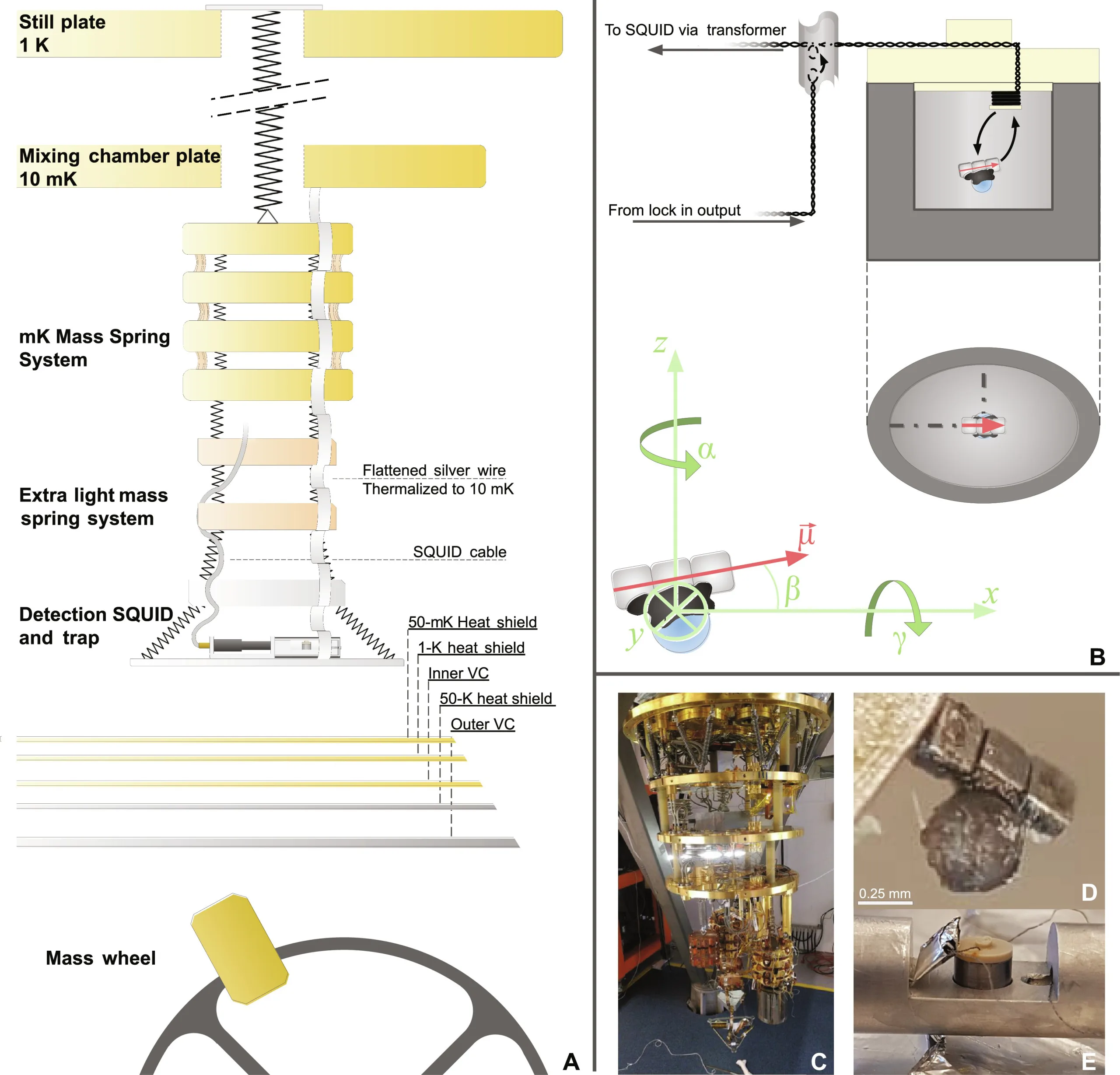Scientists have developed a method to measure gravity using levitated mechanical systems of mesoscopic size. This allows for the probing of gravity at a microscopic level where quantum effects dominate. The team demonstrated gravitational coupling between a levitated submillimeter-scale magnetic particle and kilogram source masses. This extends gravity measurements to low gravitational forces of attonewton and highlights the importance of levitated mechanical sensors. The research could pave the way for future experiments in quantum mechanics and gravity.
Exploring Gravity with Levitated Masses
The study of gravity, one of the fundamental forces of nature, has been a subject of interest for scientists for centuries. Unlike other forces, gravity is best described as a curvature of space-time, making it resistant to unification with quantum theory. This resistance is due to the fact that gravitational interaction is fundamentally weak and only becomes prominent at macroscopic scales. This leaves a gap in our understanding of gravity at the microscopic level where quantum effects dominate.
Levitated Mechanical Systems as Probes of Gravity
Levitated mechanical systems of mesoscopic size offer a unique opportunity to probe gravity while still allowing quantum control over their motional state. This opens up the possibility of testing quantum superposition and entanglement in gravitating systems. In this study, we demonstrate gravitational coupling between a levitated submillimeter-scale magnetic particle inside a type I superconducting trap and kilogram source masses, placed approximately half a meter away. Our results extend gravity measurements to low gravitational forces of attonewton and highlight the importance of levitated mechanical sensors.
Einstein’s Theory of General Relativity and Gravity
Einstein’s theory of general relativity (GR), our widely accepted theory of gravity, has been confirmed through various experimental observations. These include observing massive astronomical objects and their dynamics, the direct observation of gravitational waves from the merger of two black holes, and the imaging of a black hole by the event horizon telescope. Laboratory experiments have also been instrumental in increasing the sensitivity of gravity phenomena, including general relativistic effects in atom clocks and atom interferometers, tests of the equivalence principle, precision measurements of Newton’s constant, and tests of the validity of Newton’s law at micrometer-scale distances.
The Role of Levitated Mechanical Systems in Quantum Physics
Levitated mechanical systems are emerging as a promising technology for ultrasensitive sensing. They can be used for the mechanical sensing of very weak forces and to probe quantum physics at increasing scales of mass (and space). In magnetically levitated systems, the pathway of decoherence is largely removed. The extremely low damping of magnetic systems, combined with their relatively high mass and operation in low-noise cryogenic environments, makes them well suited for mesoscopic probes of quantum mechanics and could provide a test to possible limits of the applicability of quantum mechanics to the macroscopic world.
Gravitational Coupling in Levitated Magnetic Systems
To demonstrate the force sensitivity of the system and as a proof of concept for gravitational coupling in levitated magnetic systems, we used an electrically driven wheel with a set of three 2.45-kg brass masses, placed equally spaced along the outer rim. This wheel was used to create a time-dependent gravitational gradient at the resonant frequency of a selected mode of the zeppelin, in an effort to drive the motion gravitationally. The frequency of the masses was read out optically using a laser and photodiode, in which the masses act as a mechanical shutter.
Future Implications and Applications
This work demonstrates the detection of a 30-aN gravitational signal at 27-Hz and a damping linewidth as low as γ/2π = 2.9 μHz, with a 0.43-mg test mass, paving the way for future experiments in which both source and test mass are in this regime. This could be used to derive a more stringent bound on dissipative collapse models. Furthermore, it provides a promising platform to test for possible deviations from inverse-square force laws and fifth-force models, theories of modified Newtonian dynamics, and other extensions of the standard model. This work paves the way toward easily scalable measurements of gravitational coupling in the hertz regime and with source masses at Planck mass level, ultimately allowing for testing gravity in a yet unexplored low-mass regime and pushing into the quantum controlled domain.
External Link: Click Here For More

